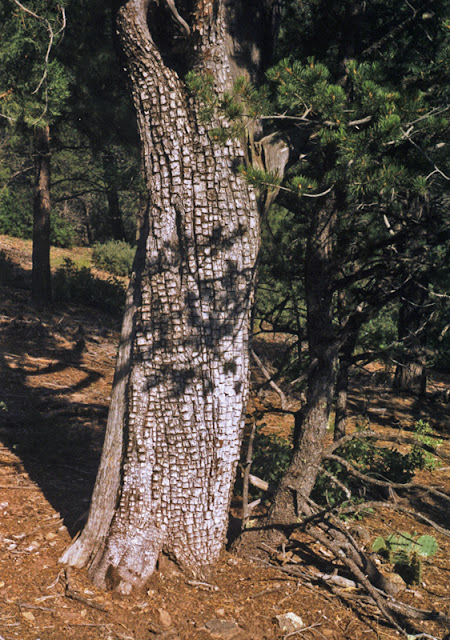The site was originally built by the Civilian Conservation Core in 1935, and the facilities retain the rustic look that characterizes many such National Forest locations in the West. From the parking lot it is just a short hike uphill to the first ridge, which I followed for about half a mile.
I was struck by the fact that every stable surface including tree trunks and rocks are covered thickly with lichens.
I'm always pleased to find an example of the Alligator Juniper. They can sometimes be found in small groves, but often there are isolated examples like this one among the pines and oaks. The thick-trunked ones can be centuries old.
The undergrowth in New Mexico evergreen forests often include many plants from the dry lower elevations such as cactus, rabbitbrush and desert wildflowers.
Low growing shrubs with oak-shaped leaves always make me a little apprehensive because of my experience with poison oak in California, but I think these are probably Gambel Oaks.
It was very pleasant to get away from the summer heat in the Rio Grande Valley, and I intend to get back to the Sandias again soon.










Nice outing! Yes, those are Gamble Oaks. They are quite spindly in nature so grow in small groups for reinforcement.
ReplyDeleteI intend to go back to the same place sometime soon. I did not see anyone else on the trail I took even though it was not far from the road and the picnic area.
ReplyDeleteI always wanted to take the tram to the top. Never did it.
ReplyDeleteThe tram is a great ride. Also, the restaurant at the top end has been upgraded. I'm really looking forward to the trip once we are through the current situation. So, if you make the trip over here, we'll treat you to the ride and lunch. Bring plenty of film.
ReplyDelete